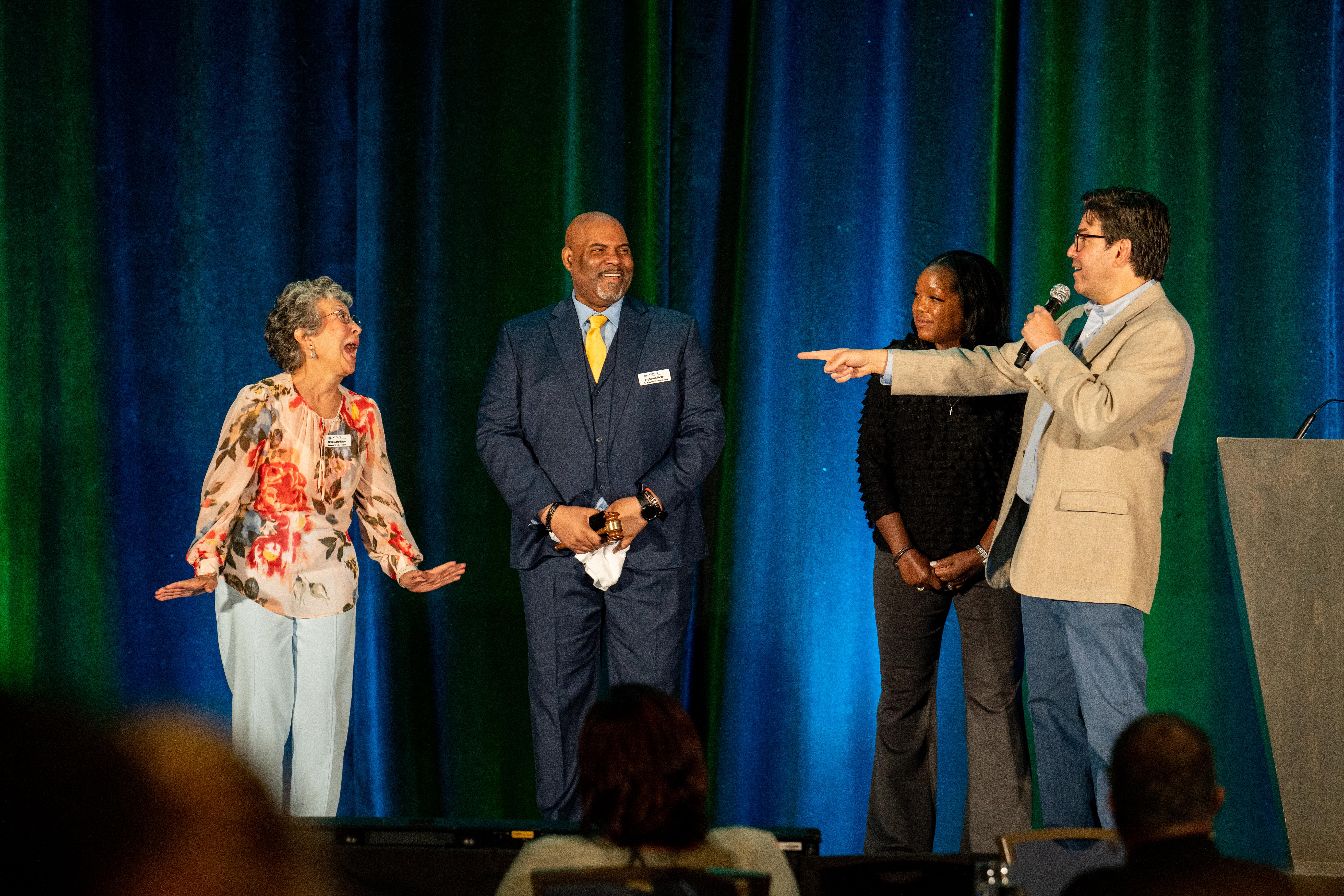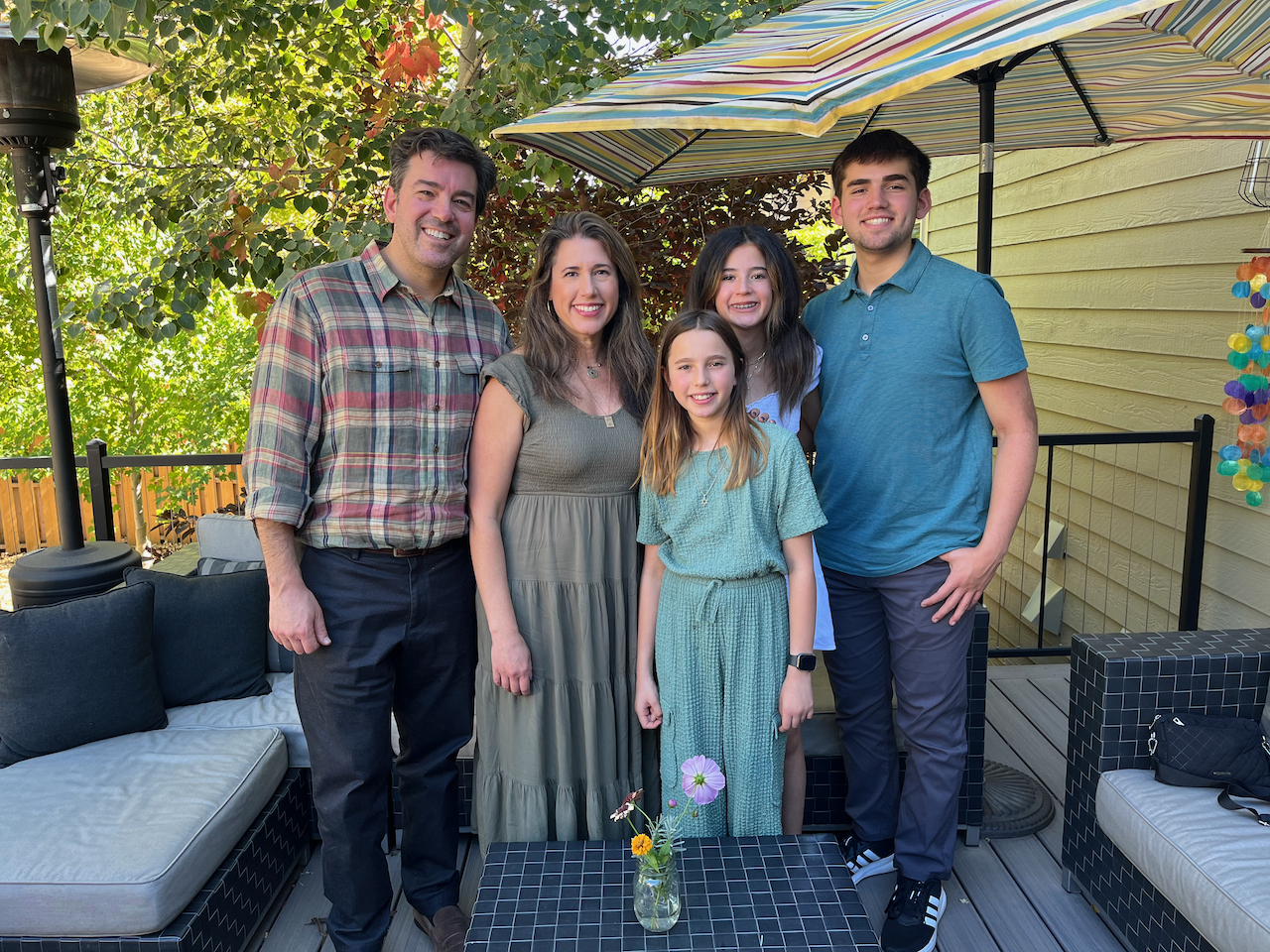Through Your Eyes
Brad Nieder, M.D., who completed his residency training on the MCV Campus in 2002, is now billed as “The Healthy Humorist,” making about 40 funny presentations a year to appreciative audiences — primarily health care professionals — from Ontario to Las Vegas, from Texas to Florida.

Brad Nieder, M.D. Contributed photos.
Did you hear the one about the ER physician ...?
This story was published in the fall 2025 issue of 12th & Marshall. You can find the current and past issues online.
It’s no joke. Brad Nieder, M.D., who completed his residency training on the MCV Campus in 2002, has loved getting laughs since he was a kid. Now, billed as “The Healthy Humorist,” he makes about 40 funny presentations a year to appreciative audiences — primarily health care professionals — from Ontario to Las Vegas, from Texas to Florida.
As a child, Nieder enjoyed watching comedians such as talk show host Johnny Carson on TV. Although fearful at first of public speaking, his own creative side, writing and performing, eventually emerged.
In high school, Nieder began writing funny bits for the school newspaper. Following graduation, he discovered improv at a club in Denver, his hometown. As an undergraduate communications major at Stanford University, he was a founding member of the Simps (short for Stanford Improvisors).
But it only seemed natural that Nieder would follow in the footsteps of his dad, a physician. As a medical student at the University of Colorado, back in Denver, he continued to use stand-up and open mic nights as an outlet, sharing stories of med school life.
He wound up focusing on emergency medicine and matched with VCU School of Medicine for his internship. It was a brand new program,” he recalls. “They were eager and seemed very welcoming.”

Brad Nieder, M.D., H'02, (right), performs on stage as The Healthy Humorist.
His residency proved a challenge of sorts, however, because of “the standard frustrations,” he explains, along with being a “career crisis kind of year.” He still remembers with great fondness the program director, Timothy C. “Tim” Evans, M.D. “He couldn’t have been nicer as I sort of confessed the difficult time I was going through.”
At the time, he says, there wasn’t a lot of room for creativity in medicine. “Now they are trying to address that,” he notes.
In his role as The Healthy Humorist — combining medicine and comedy as fodder for motivational speaking — Nieder has added the initials CSP (Certified Speaking Professional) behind the M.D. Typically hired as a keynote speaker, his recent audiences have included a dental association, health system nurses, a health care system medical staff and infectious disease experts.
It might be cliché, but laughter can be the best medicine, especially in talking to medical professionals who often have experienced or are experiencing burnout. “There is still absurdity in life,” Nieder points out. “You can still find the humor.”
People who are stressed out, he adds, can use the inspiration of levity combined with tips on taking care of themselves.
He likes to keep it interactive and tailors his material to the specific groups he is addressing. “It’s not just didactic, standing at a lectern and giving a talk. It’s engaging with the audience.”

Brad Nieder, M.D., H'02, (left) with his wife, Sara, and their three children.
There’s the health care version of the “Hokey Pokey,” for example, that explores the positive-negative conundrum. “Those terms in medicine can be a bit confusing. If a test is positive ... is that really negative? If I think a certain segment is going to work well, I get names ahead of time, get permission and bring people up to the stage to do the dance.”
Not long after finishing at VCU, Nieder married his wife, Sara, whom he met while in medical school in Colorado. “She is a brilliant social worker with her own practice,” he says.
The couple have three children, ages 12, 15 and 17. “Yes,” he says, “they’re all quite funny!”
Do they find their dad funny?
“No,” he admits. “But sometimes my wife does.”